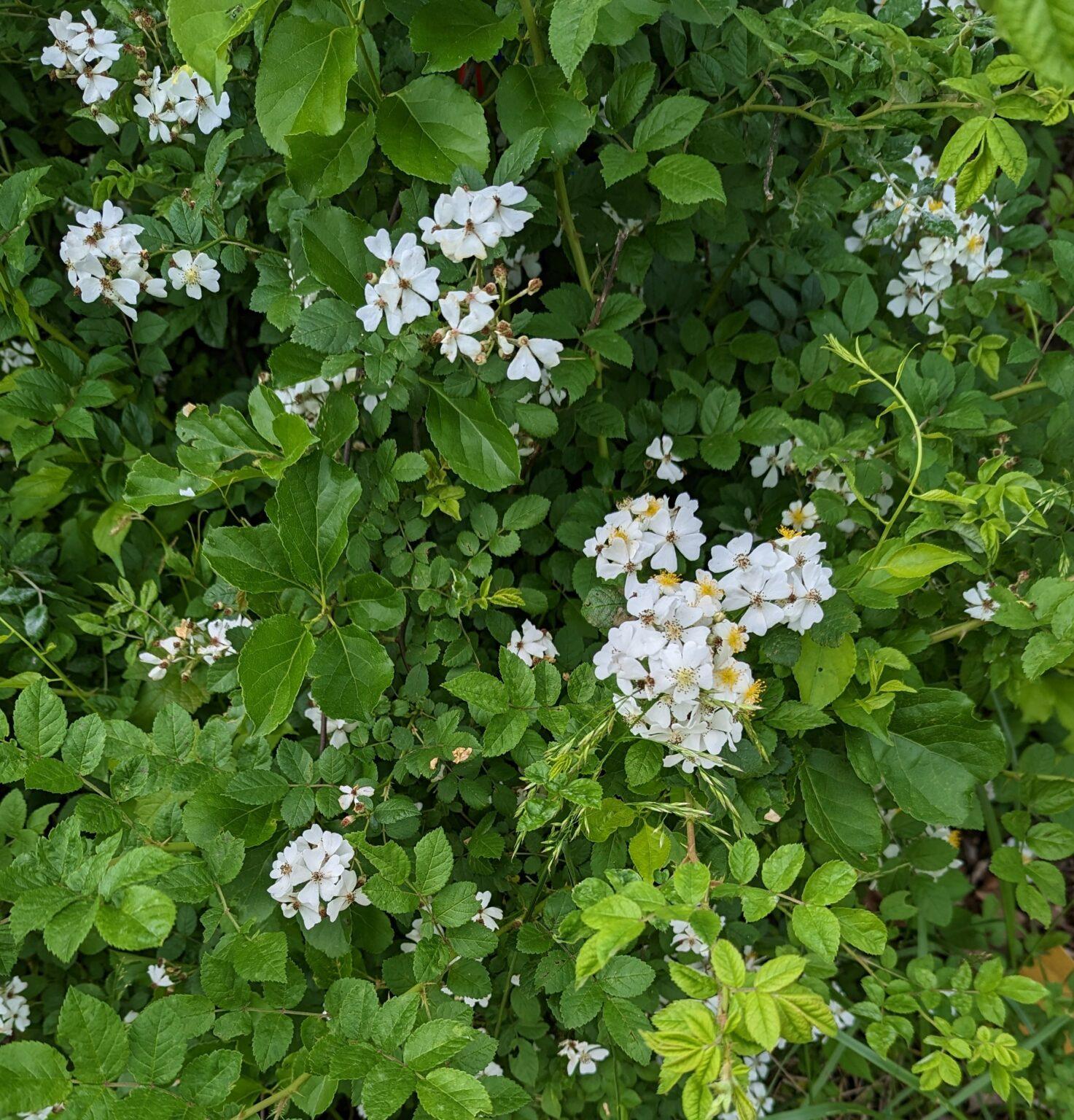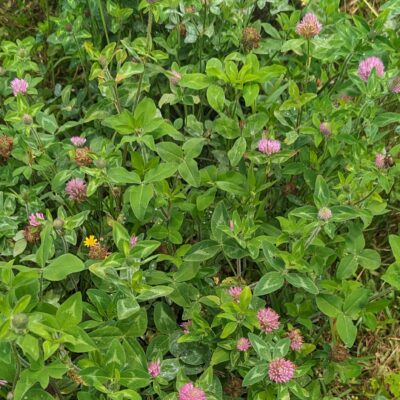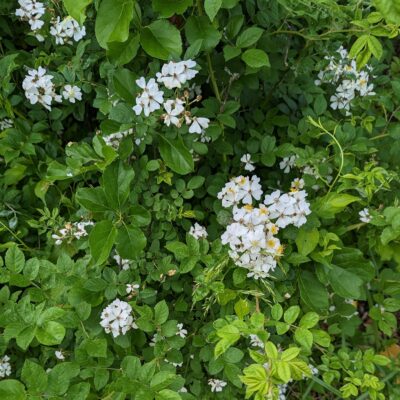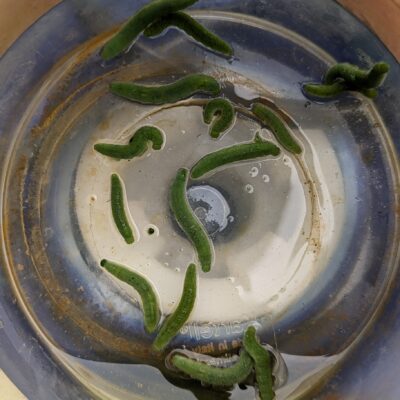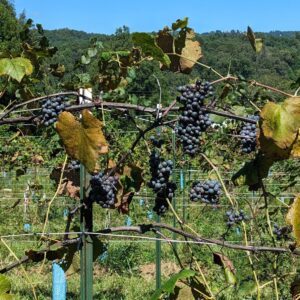Toward Better Gardening in a Changing Climate: Creating a Tailor-Made Almanac
One of the most useful tools one can have along with a spade, shovel, rake, and compost pile is a notebook. Taking note is based on observations throughout the gardening year. In doing so, you would be linking the past with the present and hopefully providing useful information for the future.
For example, Thomas Jefferson was a remarkable scientist-gardener. Between 1809 and 1826 Jefferson recorded in his “Garden Kalendar,” a part of his Garden Book, the sowing, manuring, and harvesting of crops grown at Monticello. Jefferson as a scientist recorded the failings as well as the successful techniques used: that his Hotspur peas were “killed by frost Oct. 23,” or with remarkable detail, noted of the Asparagus beans that “2/3 pint sow a large square, rows 2 1/2 feet apart and 1 f. and 18 I. apart in the row, one half at each distance.” Source.
What is most important to note are the critters and conditions which aid or hinder your efforts. Examples are: the date of spring frost, the presence of rabbits just as your carrots sprout, the return of robins, and the presence of voracious caterpillars in your crops.
Relating Growing Degree Days with Phenological Indicators
I begin recording GDD (growing degree days, remember?) on April 1st and complete the observations by the end of October here in western North Carolina (USDA Zone 7b). Our seven-year average (from when we first purchased the property in 2017 through 2023) is presented in the following table. The April 1st start date was selected for the viticulture plots. As we expand into the farming plots going forward, a March 1st date may be more appropriate to the needs of the early spring garden.
Phenological Events and GDD Observations in Western NC
| Apr | May | Jun | Jul | Aug | Sep | Oct | |
| Summer Solstice | Autumnal equinox | ||||||
| Seven-year average | 190.71 | 403.00 | 608.93 | 746.21 | 704.14 | 548.57 | 250.21 |
| Cumulative | 593.71 | 1202.64 | 1948.86 | 2653.00 | 3201.57 | 3451.79 | |
| Phenological indicators | Shadbush,
Redbud, Crabapple, Dogwood |
Lilac
Black locust, Multiflora rose, Mtn. Laurel
|
Elderberry,
Mimosa, Sumac, Butterfly bush
|
Sweet pepper bush,
Rose-of Sharon, Tree of Heaven |
Franklinia | ||
| Eastern tent caterpillar 100 GDD | Japanese beetles 1000-2100 GDD;
Fall webworm 1266-1795 GDD |
An excellent resource to track growing degree days is www.weather.gov. Go to “Past Weather” and select the area on the U.S. map that is nearest to your location. On that page, select “accumulation graphs”, then the dates (month) that you are interested in (beginning March or April 1st), for the variable, select “GDD base 50.” When done for our area, we see an accumulation of 50 GDD by the third week in March (Star Magnolia in full bloom) and 100 GDD by the end of March (Redbud in bloom). In 2023, this correlated nicely with the astronomical spring (March 20th).
Photo-Documentation
Using your smart phone to document local data, you’ve now joined the ranks of the citizen scientist! Photography provides an accurate date stamp. I photographed bloom time of dogwood here in early to mid-April (150-199 GDD); in New England bloom time is in late May illustrating the point that GDD and month differ depending on your locale and climatic conditions. In 2023, also documented:
- Rosa multiflora bloom, late May (400-499 GDD)
- Red and alsike clovers flowering, mid-June (1200-1399 GDD)
- Perennial sweetpea and daylilies bloom, late June (1400-1699 GDD)
- Grape gall midge galls and hybrid chestnut (Castanea dentata x C. mollissima) bloom, late June (1400-1699 GDD)
- Bindweed flowered early July (1700-1999 GDD)
- Tobacco hornworms stripped tomatoes and imported cabbage worms stripped broccoli rabe and kale crops, early August (2000-2399 GDD)
Multiflora rose in bloom, red clover, perennial sweetpea, hybrid chestnut, bindweed, tobacco hornworm, imported cabbageworm
Observations of Importance to the Gardener
Items to note are of course those most notable to you and your gardening efforts. For a start:
- Last average spring frost date for your area
- Soil can be worked (the soil is above freezing)
- Plant early cool crops
- GDD calculations beginning on March or April 1st
- First astronomical day of spring (March 19-21)
- Plants in bloom
- Planting date of carrots and greens
- First siting of rabbits /groundhogs in your plot
- Return of hummingbirds to your feeder
- Plants in bloom
- Summer Solstice (June 20-21)
- Departure of hummingbirds
- Autumnal Solstice (September 21-24)
- First average frost date
Putting it Together
Upon compiling specifics for your growing zone, you can begin to build a table (“Garden Kalendar” or your very own “Poor Richards Almanack”) tailored to your local conditions. The effort will pay off, as the probability of matching growth requirements to climatic conditions are better aligned. Keep in mind that no plan is ever fool-proof. However, if we look at tasks as “blocks” planting in two-week increments, the likelihood of success will increase. In any case, record both successes and failures for the future. A negative outcome is not necessarily a failure per se, but data that a good scientist-horticulturist will put to use in the future!
| Phenology | Observation | Date | GDD | Action |
| Red maple
Flowering Quince Star Magnolia Saucer Magnolia
|
Soil can be easily worked | L. March | 50 | Sow snap peas,
Hardy greens |
| Shadbush,
Redbud, Crabapple, Dogwood |
Last average spring frost date | L. Apr | 190 | Sow mixed lettuces, spinach, chard, carrots, radishes, beets |
| Multiflora rose
Mtn laurel |
M. May | 500 | Plant summer garden | |
| Winter Squash | First true leaves | E. June | 875 | Apply BT or Azadirachtin to protect against squash vine borer |
| Elderberry,
Mimosa, Sumac, Butterfly bush |
Japanese beetle emergence | June 21st | 1000-2100 | Apply foliar spray |
| Sweetpea bloom
Daylily bloom Chestnut flower |
Grape Gall Midge galling grape leaves | June 30th | 1400-1699 | Strip infested grape leaves |
| Cynthiana at veraison | Tobacco hornworm on tomato
Pepper Eggplant potato |
E. August | 2000-2399 | Early intervention: apply BT or Azadirachtin;
Late intervention: Pick off hornworms |
| Cynthiana at veraison | Imported Cabbageworm on
broccoli rabe kale Brussels sprouts
|
E. August | 2000-2399 | Early intervention: apply BT or Azadirachtin;
Late intervention: Pick off hornworms |
| Average first frost date Oct. 19th | Approx. 60 days before average first frost | Mid-August | 2650 | Sow fall greens, peas, bush beans |
Winter squash infested with squash vine borer, grape gall midge, Cynthiana at veraison
This two-part series is intended to help you to become better growers. In fact, I can’t do that, but your garden, environment and its cohorts will. All I can do is provide you with the tools to point you in a direction. It is my hope that this series has inspired you to incorporate some of these tools, get dirty while cultivating your plot and connecting with the earth and life around you! If you do, please share your experience.
Join us next week when we talk about seeds again.
~ Signing off for now, Joe
Resources
There are online resources to help with calculating GDD. Follow the link below and put in your location, select the month, and base temperature. That’s it, the calculator does the rest!
https://newa.cornell.edu/degree-day-calculator
For information on crop and pest management, follow the link below. It provides IPM data for a number of crops, including:
- Apples
- Blueberries
- Strawberries
- Field Crops
- Grapes
- Ornamentals (Conifer pests)
- Vegetables

